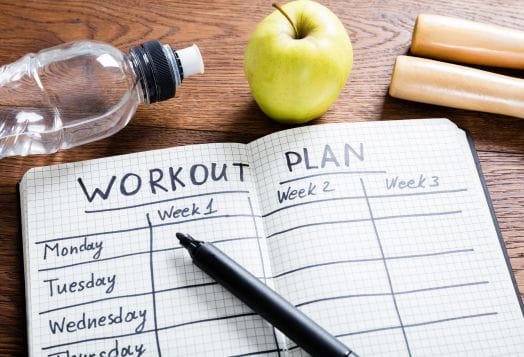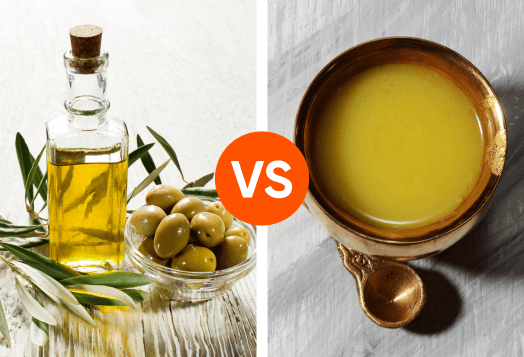
You hit the gym, determined to shed those extra kilos. But as you scan the floor, confusion sets in. Some people are pounding away on the treadmill, others are lifting heavy weights, and a group is sweating through a HIIT session. So, what’s actually the best exercise for weight loss?
Should you stick to cardio, strength training, or HIIT? Let’s clear up the confusion and find the training style that gets real results.
What Training Style Burns Fat the Fastest? A Look at Strength, Cardio, and HIIT
Different workouts burn fat in different ways. Cardio helps you burn many calories in one session, strength training builds muscle that keeps your metabolism high, and HIIT combines both for a time-efficient fat-burning effect.
Let’s break down each training style and what it’s best for.
1. Cardio – Best for burning calories quickly
If your goal is to burn as many calories as possible in a single workout, cardio is your best bet. Activities like running, cycling, swimming, or even brisk walking keep your heart rate elevated for an extended period, helping you torch fat faster. The intensity of your workout determines how many calories you burn.
For example, a person weighing 154 pounds can burn around 145 calories in 30 minutes of moderate cycling, but increasing the intensity to 10 miles per hour or more can burn nearly 295 calories at the same time.
While cardio is effective for weight loss, it doesn’t necessarily build muscle. The calorie burn stops once your workout ends unless you incorporate high-intensity intervals.
If you prefer steady-state cardio, you can consider mixing in incline walks or sprint bursts to keep the body working harder.
2. Strength Training – Best for long-term fat burn
Unlike cardio, which burns calories primarily during the workout, strength training helps you burn more even after you’ve left the gym.
Lifting weights or doing bodyweight resistance exercises builds lean muscle, which in turn increases your resting metabolic rate—meaning your body continues burning calories even at rest. The more muscle you have, the more energy your body needs to maintain it.
A 30-minute weightlifting session burns around 110 calories, but the real benefit comes from the afterburn effect. Your body continues expending energy for hours as it repairs and strengthens muscles.
Research has shown that weight training improves metabolism over time, making it a great option for those who want to lose fat while sculpting their physique.
However, since it doesn’t burn as many calories per session as cardio, a combination of both can be the best approach.
If you’re looking for body recomposition—losing fat while building muscle—strength training should be a priority.
Focus on compound movements like squats, deadlifts, and presses for the most efficient results.
3. HIIT – Best for Time-Efficient Fat Loss
For those who want the best of both worlds, HIIT (High-Intensity Interval Training) is the way to go. HIIT workouts involve short bursts of intense exercise followed by brief recovery periods, keeping your heart rate high while also engaging muscles. This combination makes HIIT one of the most efficient fat-burning workouts available.
A 45-minute HIIT session can burn up to 485 calories, often 25–30% more than weight training or steady-state cardio. Because of the high intensity, your body also continues burning calories long after the workout ends. Studies suggest that HIIT can be just as effective as traditional cardio in reducing body fat while also preserving muscle mass.
A 20–30 minute HIIT workout—whether it’s sprinting intervals, jump squats, or burpees—can be enough to fire up your metabolism. Adding weights to HIIT sessions can further boost muscle growth and fat loss, making it a powerful option for anyone short on time.
Weight Loss Strategies That Work
Losing weight is more about finding the right balance between exercise, nutrition, and consistency. Here’s what you need to keep in mind.
1. Mix cardio, strength, and HIIT for maximum fat loss
Each workout has its strengths—cardio burns calories fast, strength training builds muscle for long-term fat burn, and HIIT combines both for efficiency. The key is moderation and variety. If you do cardio daily without lifting weights, you may lose muscle along with fat.
On the other hand, only lifting weights without any cardio can slow down your calorie burn. A mix of all three—like three strength sessions, two cardio days, and one HIIT workout per week—is a great way to maximise fat loss.
2. Focus on intensity, not just duration
Long workouts aren’t always better. A 30-minute high-intensity workout can burn more fat than an hour of slow-paced exercise. Instead of jogging at the same speed for 60 minutes, try alternating between sprints and walking. If you’re lifting weights, go for progressive overload—increasing the weight or reps over time to challenge your muscles.
3. Strength training is a must for long-term weight loss
Many people think weightlifting is only for muscle gain, but it’s actually one of the best ways to burn fat. Unlike cardio, which stops burning calories once you’re done, strength training increases your resting metabolic rate, helping you burn fat all day long.
It also prevents muscle loss, which can happen if you rely only on cardio. Compound exercises like squats, deadlifts, and push-ups are great for engaging multiple muscles and maximising fat burn.
4. Watch What You Eat—But Don’t Starve Yourself
Exercise alone won’t help if your diet is out of control. The goal isn’t to eat less—it’s to eat right. Focus on protein-rich foods like eggs, chicken, tofu, and lentils to support muscle recovery. Swap refined carbs for whole grains, and make sure you get enough healthy fats.
Avoid sugary drinks, processed snacks, and excessive alcohol, as they can undo all your hard work. If fat loss is the goal, aim for a moderate calorie deficit—not extreme dieting.
5. Prioritise Recovery and Sleep
Your workouts are only effective if your body has time to recover. Overtraining without proper rest can lead to muscle breakdown and increased hunger cravings, making weight loss harder. Aim for 7–9 hours of sleep per night, stay hydrated, and take rest days seriously.
Active recovery like yoga, stretching, or a light walk can help keep you moving without overstressing your muscles. If you’re feeling drained, it’s okay to skip a workout—your body needs time to rebuild.
Sample Workout Routine for Beginners
Starting your weight loss journey can be overwhelming, but a simple routine combining cardio, strength training, and HIIT can set you on the right path.
Day 1: Cardio – 30-minute brisk walk or cycling at a moderate pace.
Day 2: Strength Training – Bodyweight exercises like squats, push-ups, and lunges (3 sets of 12 reps each).
Day 3: Rest or Light Yoga
Day 4: HIIT – 20 minutes alternating 30 seconds of jumping jacks, burpees, and high knees with 30 seconds rest.
Day 5: Strength Training – Dumbbell shoulder presses, bicep curls, and planks (3 sets of 10 reps each).
Day 6: Cardio – 25-minute jog or swimming.
Day 7: Rest and recovery.
Take Charge of Your Weight Loss Journey Today
Weight loss isn’t about choosing just one training style—it’s about balance, consistency, and the right strategy. A mix of cardio, strength training, and HIIT, combined with proper nutrition and recovery, will give you sustainable results
Small changes, done consistently, lead to big transformations. Instead of guessing what works best for you, let a professional design a plan tailored to your goals. Their guidance can help you train smarter, eat better, and get results faster. Start your journey with expert support today!
Disclaimer: This information provided is intended for general informational purposes only. It is not a substitute for professional advice or guidance. For personalised recommendations or specific concerns, please consult a certified professional.




